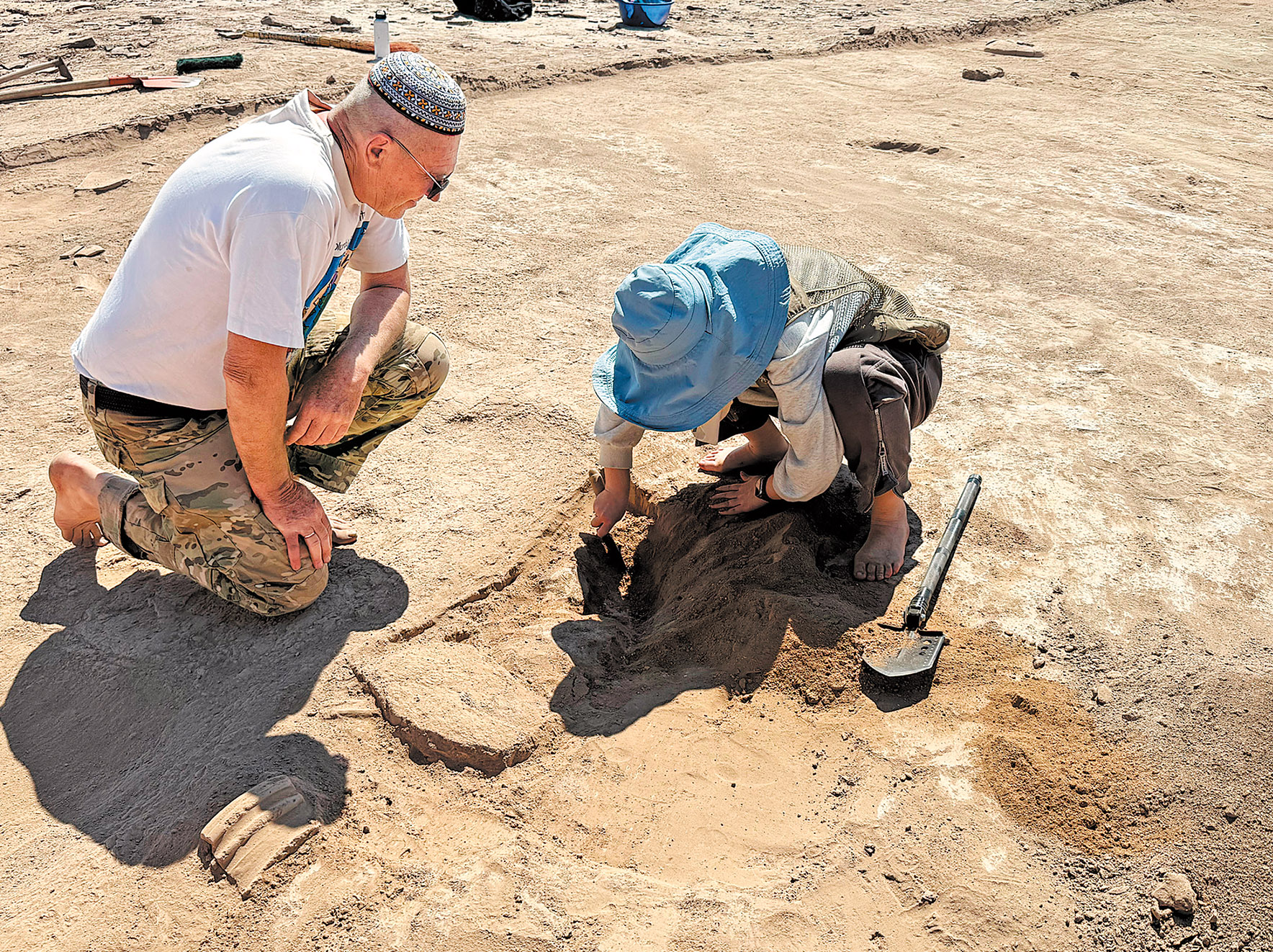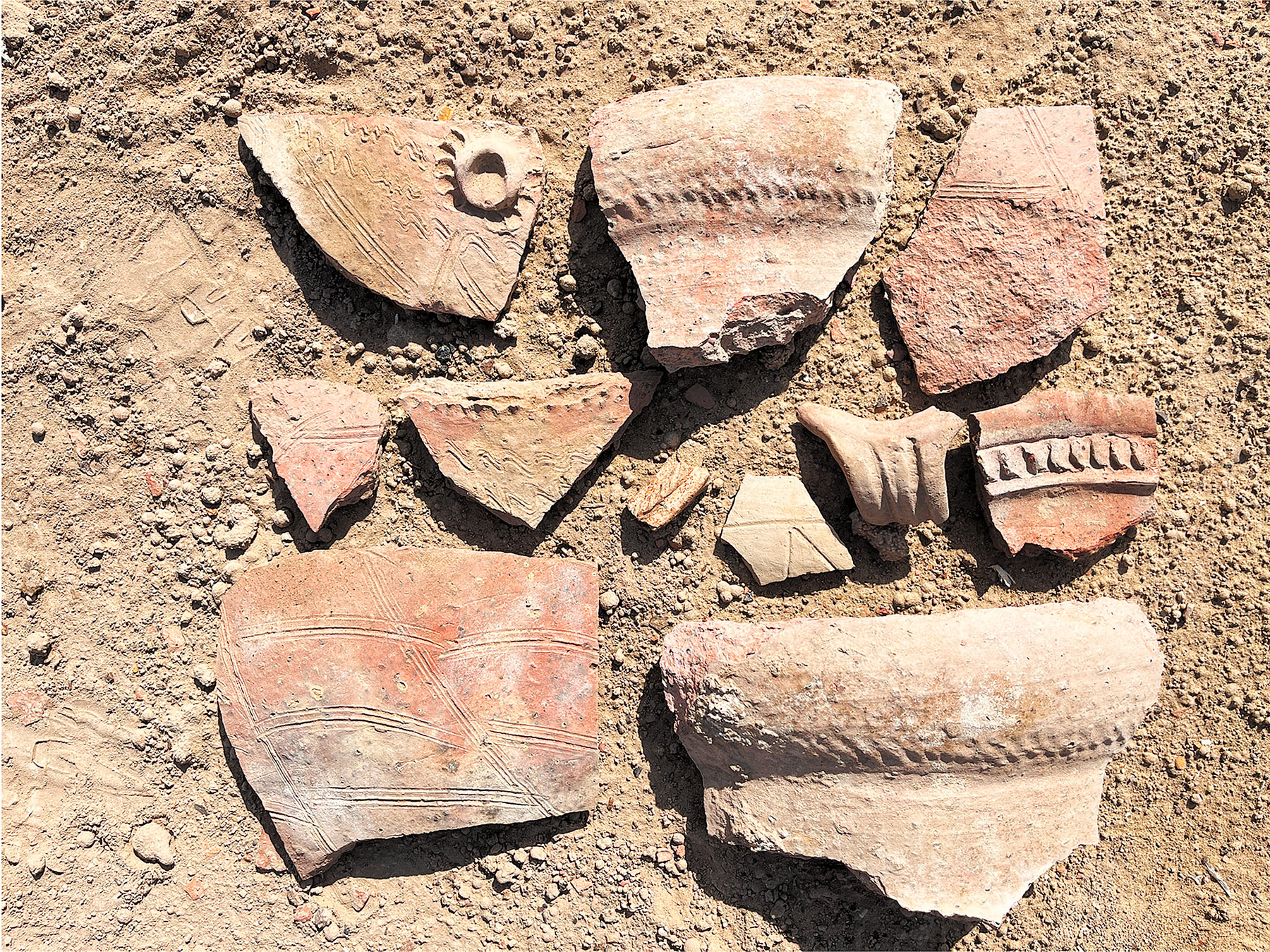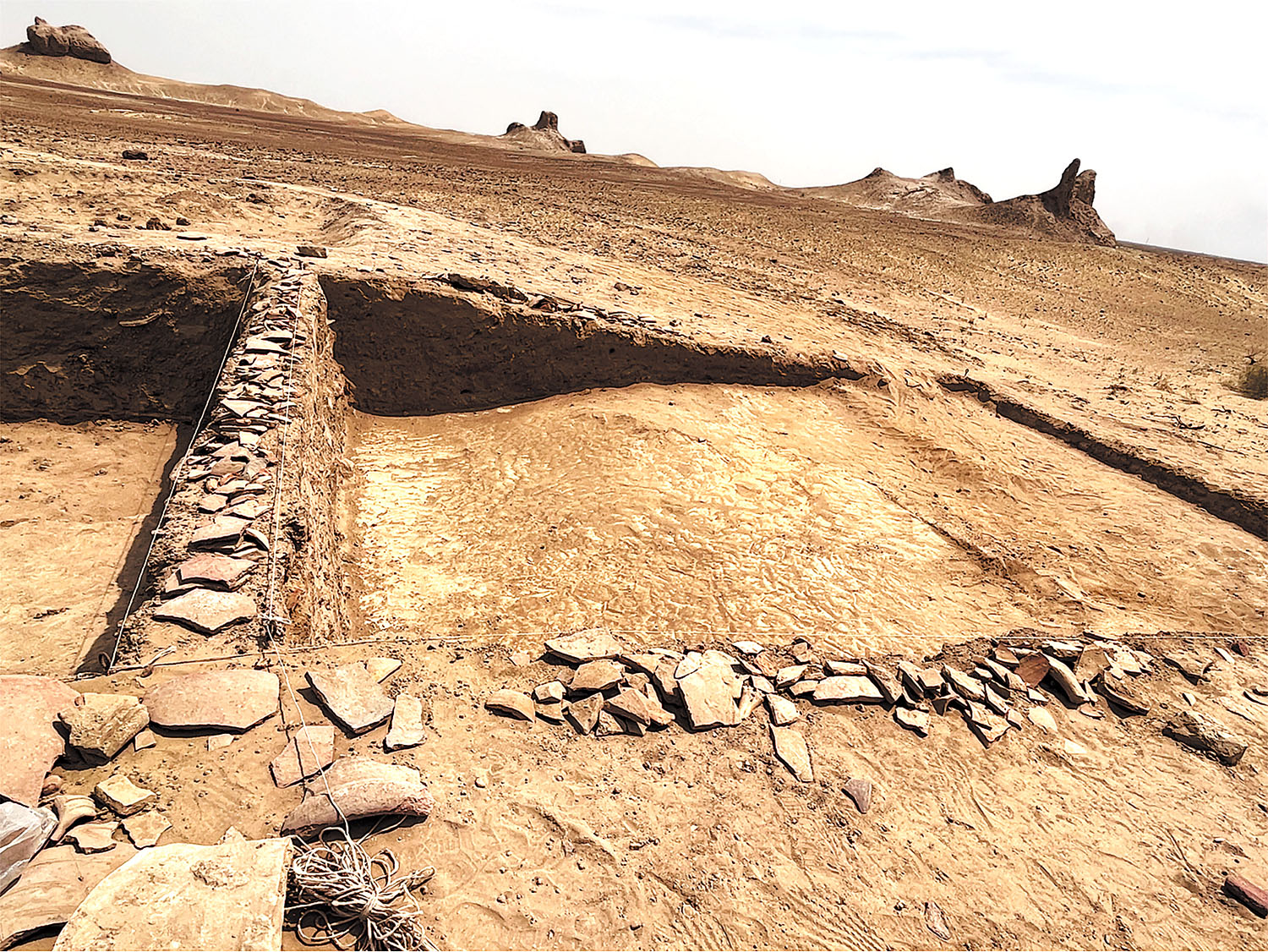Joint excavations in Uzbekistan's millennia-old ruins uncover buried legacies that once connected Central Asia to rest of the world, Fang Aiqing reports.

On the southern edge of Central Asia's Kyzylkum Desert, where the sands meet an oasis, lies the ancient site of Bolshaya Kyrk-Kyz Kala, directly translated as the "Big Fortress of Forty Girls".
Built in the 4th to 3rd centuries BC and inhabited until the 7th to 8th centuries, the fortress has withstood millennia of wind and sand, standing as a witness to the rise and fall of settlements along the lower reaches of the Amu Darya River in Karakalpakstan, an autonomous republic of Uzbekistan southeast and southwest of the Aral Sea.
Though legends about this place abound, one stands out: once upon a time, a princess and her 40 companions bravely repelled waves of nomadic invaders, defending their fortress and securing a legacy of courage and honor in its name.
Legends aside, the vast, sparsely populated region along the lower reaches of the Amu Darya River preserves a wealth of historical sites and relics — from architectural remains and murals to human skeletons — that offer rare insights into cultural exchanges, human migrations and historical transformations across Central Asia. The land has become a magnetic draw for archaeologists and historians eager to uncover its mysteries.

From April to May, a group of teachers and students from the School of Art and Archaeology of Zhejiang University in Hangzhou, East China's Zhejiang province, participated in a joint excavation program of Bolshaya Kyrk-Kyz Kala, along with their counterparts from the Karakalpak Scientific Research Institute of Humanities, which is part of the Karakalpak branch of Uzbekistan's Academy of Sciences, as well as Russia's State Museum of Oriental Art.
Earlier, Uzbek and Russian archaeologists had partially explored the site, which once served as part of a defensive fortress system protecting the oasis during the early Khwarazm period. The Khwarazm civilization, spanning today's Turkmenistan, Uzbekistan and Kazakhstan, flourished for over a thousand years along the Silk Road before fading in the 13th century.
Excavations revealed the remains of residential buildings and traces of handicraft production, particularly pottery workshops, in the eastern suburbs of the site. Yet, a full understanding of the city's layout and internal organization remains elusive.
Building on their expertise in interdisciplinary archaeology, staff members from Zhejiang University were invited by the Karakalpak institute to conduct field investigations and preliminary research in Karakalpakstan in May 2024 and this March, respectively, before they signed a memorandum of cooperation and formally carried out excavation and research at the Bolshaya Kyrk-Kyz Kala site in April and May.
During the month of excavation, the team of experts and college students from China, Uzbekistan and Russia explored an area of around 110 square meters slightly northwest of the site's central part.

According to Jiang Lu, an associate professor at Zhejiang University, the dig revealed three major cultural layers — deposits of debris and artifacts left by successive generations — with the earliest dating back to the same era as China's Han Dynasty (206 BC-AD 220).
Jiang says they uncovered two well-preserved sections of a brick wall foundation with floor structures dating back to the 7th to 8th centuries, apart from a corner of a wall foundation built during the 2nd to 3rd centuries, marking the first discovery of architectural remains from the site's earlier period.
Other discoveries included pottery vessels and shards, animal teeth and bones, textiles and varied artifacts. Patterned pottery fragments in particular displayed a distinctive Central Asian aesthetic that contrasts sharply with Hanera pottery in China, says Hu Yingqi, a graduate student from Zhejiang University who took part in the excavation.
For the joint archaeological program, experts from Zhejiang University's School of Art and Archaeology and School of Earth Sciences launched a collaborative research project through which remote sensing technology powered by generative artificial intelligence is applied to automatically identify ancient relics.
Seven sites along the lower Amu Darya and nearby regions were flagged, including Bolshaya Kyrk-Kyz Kala, demonstrating the promise of the technology for future surveys.

Life in the desert was demanding. Daytime temperatures rose above 40 C only to plunge below 10 C at night with occasional sandstorms and sudden downpours. The team usually began at 7 am, working for six hours to clear the earth's surface, collect artifacts, draw archaeological illustrations and record information, leaving the afternoon for desk work. Sometimes they resumed excavation at 4 pm and continued till 6 pm.
Weekends offered brief respite, as foreign experts guided Chinese students to nearby sites, explaining structures and layouts, drawing comparisons, and interpreting the Khwarazmian civilization.
Zhang Shipeng, a research assistant from Zhejiang University, was impressed by the ancient civilization's urban architecture, highlighted by the dozens of unearthed fortress remains dating from the 6th century BC to the 6th century.
The intricate structures are still visible despite the passage of time: the moisture-resistant foundations are made of river sand and can mitigate earthquake shocks; and the walls built from large mud bricks with special marks on each are bonded with clay mortar, some wedged in and reinforced with natural stones. Unlike ancient Chinese architecture, wood was seldom used due to the absence of tall trees in the Khwarazmian oasis, Zhang explains.
Sergey Borisovich Bolelov, senior research fellow at the State Museum of Oriental Art of Russia, highlighted that ancient city sites in Central Asian regions have demonstrated distinct architectural features, during an online seminar in May. Therefore, local archaeologists employ principles and techniques quite different from their Chinese peers.

He says it was fun to interact with these young, energetic colleagues and they would like to share what they know. During the excavation, he explained in detail their concepts and techniques and despite the language barrier, taught the students how to better identify and analyze pottery types in the region.
Vadim Vadimovich Yagodin, director of the archaeology department at the Karakalpak institute, notes that they've recognized the differences in cultural and archaeological traditions between China and the Central Asian regions. Despite these differences, they've identified common ground in practical work and cultivated a friendship and better understanding of each other through cooperation and shared experiences.
ALSO READ: Passage to history
Chen Jingxin, assistant professor at the School of Art and Archaeology, Zhejiang University, says: "This archaeological expedition marks a significant step for Zhejiang University in Silk Road archaeology and an active effort in cultivating archaeological talent with an international perspective and advancing cross-cultural research."
He says the team plans to continue excavations over the next three to five years, combining fieldwork with advanced technologies to study site layouts, building methods, cultural relics, and environmental changes.
Contact the writer at fangaiqing@chinadaily.com.cn


